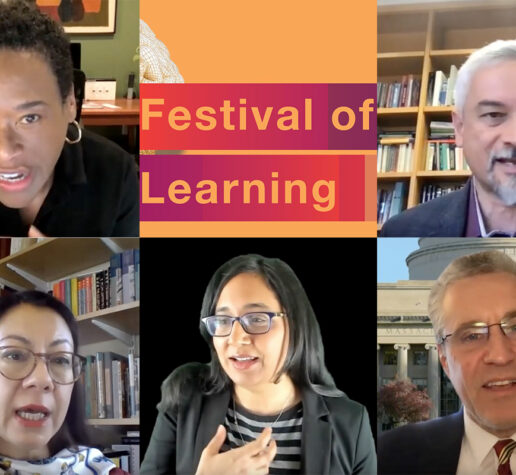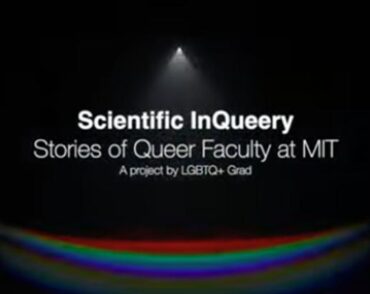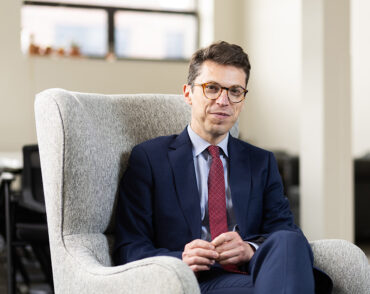
Festival of Learning centers on guiding students from surviving to thriving
The annual event aims to realize the promise of “new normal” education through community and technology.
The Festival of Learning is an annual event for MIT faculty, students, and staff, co-sponsored by MIT Open Learning and the Office of the Vice Chancellor to examine excellent learning practices and research. After a hiatus in 2021, the Festival of Learning resumed this January with a virtual format to explore how education at MIT has been transformed by world events, digital innovations, and renewed commitment to better serve its diverse student population.
In Chancellor Melissa Nobles’ opening remarks, she reflected on the importance of diversity of thought and experiences and educating the whole student. A hallmark of the “whole student,” she said, is someone who prioritizes their own and others’ well-being. “We aim to celebrate and inspire one another with the experiments happening in this space.”
Professor Krishna Rajagopal, acting vice president for open learning through Jan. 31 and now chair of the OpenCourseWare faculty advisory board, urged attendees to think of positive impacts that have helped student learning during this challenging time, saying, “We’re not just asking, ‘How did you survive?’ The question is, what will you keep or change in your pedagogical practices for the new normal?”
Tools and techniques for instruction
The first panel spoke to programs and practices to help instructors teach the whole student more effectively. Moderator Aaron Kessler summarized MIT’s transition to remote learning, the employment of Canvas, and the return to campus. He remarked on how this is a unique time to utilize educational technology.
For lecturer Mauricio Karchmer’s course 6.006 (Intro to Algorithms), some of those technologies were Canvas integrations: Gradescope, Piazza, and Lightweight Lecture Capture. He said, “A large class is like running a small company: Without tools it would be virtually impossible to manage; with the tools it’s possible to scale up, but sometimes we overuse those tools.” Karchmer feels Canvas works more effectively for smaller classes than large lectures because it wasn’t clear how much students actually used the resources available.
Professor Emma Teng had a small class size for her course 21G.042 (Three Kingdoms: From History to Fiction, Comic, Film, and Games). She was able to use the Canvas integration of Perusall with great success, garnering authentic class participation and extended engagement outside of class time. Perusall supports a range of file types where instructors can annotate, preseed questions, and highlight text before class meets to discuss the reading. Marking topical themes with hashtags also created a consistent thread throughout the semester, making it easier to facilitate in-term and post-term adjustments.
Integrating online courses into the classroom
Joey Gu, a Digital Learning Lab scientist and lecturer in chemical engineering, shared how he and Professor Martin Bazant created two MOOCs for the seminal chemical engineering graduate class 10.50 (Analysis of Transport Phenomena). Once they had put their residential teaching at MIT online during the shift to remote learning, they realized they could adapt the material: Video content can be used as a classroom learning resource just like conventional textbooks. The videos are more succinct and contain fewer mistakes than live lectures. Difficult problems are made accessible through real-time feedback with adaptive hinting and detailed solutions.
However, Bazant and Gu reported that even though students liked the interactive problems from the online course modules, they still preferred in-person classroom time to the flipped classroom model. Students appreciated interacting with instructors in real time, having live discussions, and being able to gauge how their peers are doing. Ultimately, instructors have to balance pushing the envelope with the latest learning science research, with listening to student feedback about what they want from the course experience.
Inclusive instruction practices
Co-moderator Janet Rankin, director of MIT’s Teaching and Learning Lab, kicked off the second panel by saying, “Good teaching is inclusive teaching.” Co-moderator Ruthann Thomas contextualized the difference between diversity and inclusion, emphasizing that inclusion speaks to how members are treated within a diverse group and how they feel in that group. Addressing diversity alone through recruitment of historically underserved populations doesn’t erase persisting biases. Inclusive teaching principles include building community and belonging, structured interactions, transparency about expectations, and values.
Arathi Mehrotra, lecturer in class 15.280 (Managerial Communication), offered two tactics of inclusion in the classroom to foster a deeper connection with students: (1) interacting with students as individuals; and (2) leveraging technology to connect with them. One of the simplest, yet most foundational, ways to make students feel seen and heard is learning students’ names and pronouns — pronouncing names correctly and calling students by their names as much as possible. Mehrotra shared some of the technologies she leveraged to connect with individual students by giving direct, personalized, and human feedback with video and verbal explanations. Additionally, providing ample opportunities for students to reach out for one-on-one time will increase the likelihood they will reach out for help.
The importance of mentorship
Senior Lecturer Peter Dourmashkin described how he and his physics department colleagues have built community within 8.01 (Classical Mechanics) and 8.02 (Electricity and Magnetism). Dourmashkin and his colleagues have found that students perform better with mentorship, whether that comes from graduate teaching assistants, their student peers, or assigned mentors. “The key thing is that mentors enable belonging,” Dourmashkin said. “They’re motivators, they’re especially listeners, they can provide information, they’re helpers, and this is another kind of glue in the network of our community.” In particular, peer-to-peer learning can help identify gaps that the professor doesn’t see and create a bridge between first-year students and the rest of the teaching team.
When Canan Dagdeviren talked about pivoting her lab class MAS.810 (Project Realization in Cleanroom) to an online format, the common thread of her presentation was compassion. She evoked compassion through creative solutions for students to emulate the lab in their homes and by sending “mini lab” kits to them. Dagdeviren eased the emotional drain on her students by fostering a sense of shared global community when she invited peers from Istanbul to share their own problems and successes, so students would know they weren’t alone in having their lab experience taken from them due to the pandemic.
Throughout the two panels at the Festival of Learning, the underlying keys to success were less about the specific tools and more about reaching students on an emotional level. Leading with compassion to make students feel seen and heard is just as important as the content. Fostering a community within the student body is vital to learner success. As Rajagopal said, “What’s the magic we’re trying to create at the core of being an MIT student? How do we create that engagement for a deeper kind of learning to occur?”


